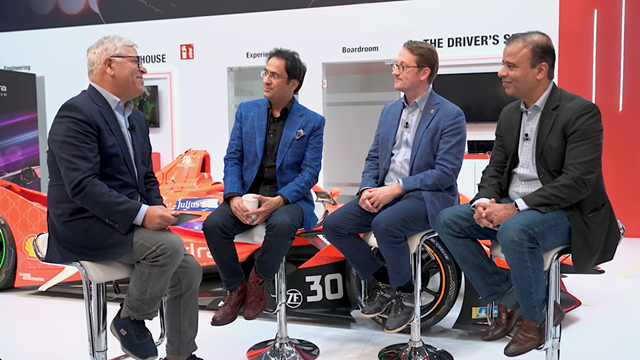Active steering for tiny antennas: Ethertronics claims a first for LoRa (and other developments)

via Flickr © Photophilde (CC BY-SA 2.0)
- Active steering antenna developed for LoRa modules
- Means module can go anywhere
- Other recent IoT developments name-checked
There are signs that the still emerging IoT sector is entering a welcome new phase - at least in the way it is beginning to market itself and differentiate its approaches. Instead of the endless confidence-boosting growth projections we’re starting to see the learnings from early trials and deployments cycling back onto the market as enhancements.
A good example comes from smart antenna specialist, Ethertronics, which is claiming bragging rights on the first LoRa module with an ‘active steering antenna’.
Long technical explanation short: Ethertronics (a long-time veteran of smart antenna technology) has an ‘active steering’ technique which offers “significant improvement in reliability of the wireless link and range by using dynamic radiation patterns, enabling customers to place their IoT or M2M sensor or device virtually anywhere,” it claims.
The result is longer range tracking performance and pinpoint indoor location accuracy, while making the process of installing and positioning a LoRa module much simpler and cheaper.
Ethertronics claims the module solves a few glaring problems with IoT modules and their passive antennas, pointing out that you can’t just place a module where you like and expect it to function behind a wall, say. “Quite often the IoT device with a passive antenna simply does not work, due to its weak antenna signal,” it claims.
“The active impedance matching capability of the Ethertronics LoRa module helps to handle the detuning of the antenna by its surrounding environment, while the multiple radiation patterns available from the Ethertronics Active Steering antenna along with its strong dual polarization properties, provides a more reliable signal that can be received across a large number of channels within a communication link.”
Simple, hassle-free, and even automatic installation is going to be a hugely important success factor if the sort of mass-market applications envisaged by those multi-billion unit deployment projections are ever going to get off the ground - you can’t be making ‘truck-rolls’ for a failed $2 dollar module. So we can expect to see IoT system planners majoring on module link resilience and techniques for things like active steering being developed and pushed to meet the need.
Mobile World Congress
Notable IoT market developments announced at or around MWC included:
- The LoRa Alliance announced ‘widespread support’ from operators and network software vendors for a roaming capability, both within and between countries.
- Jaguar Land Rover drivers will be able to make payments at Shell stations in the UK, using the in-car touchscreen and without leaving the comfort of the car. They confirm which pump they are at, pre-authorise using Apple Pay or PayPal, fill up, view the receipt and leave.
- Ericsson and Qualcomm announce a successful Voice over LTE (VoLTE) call for Internet of Things (IoT) on an existing mobile network infrastructure with new software activation and new modem device that supports CAT-M1/LTE-M technology. Means ‘things’ can be enhanced with a voice call capability.
- Infineon teams up with eluminocity to develop the more intelligent streetlight with new sensors and comms capabilities.
Email Newsletters
Sign up to receive TelecomTV's top news and videos, plus exclusive subscriber-only content direct to your inbox.




